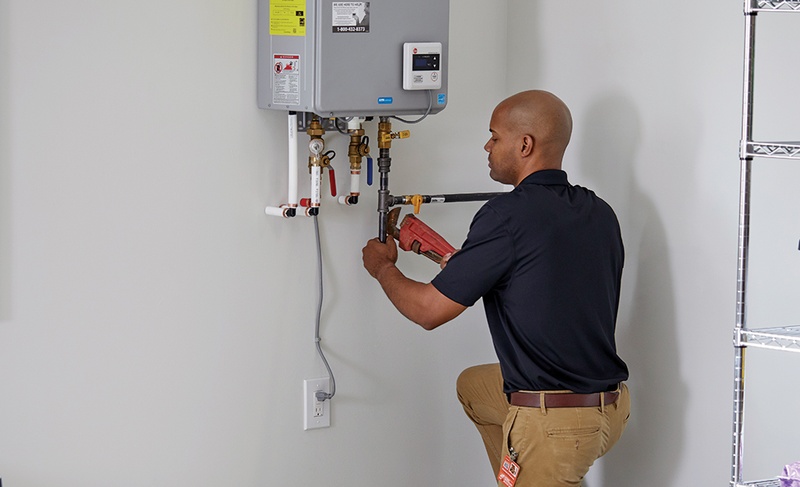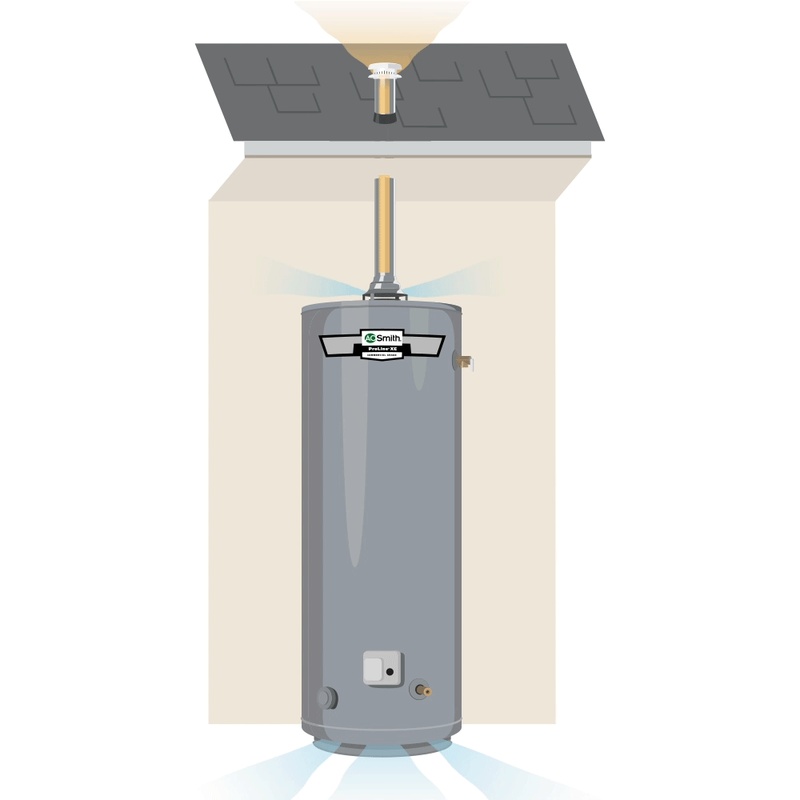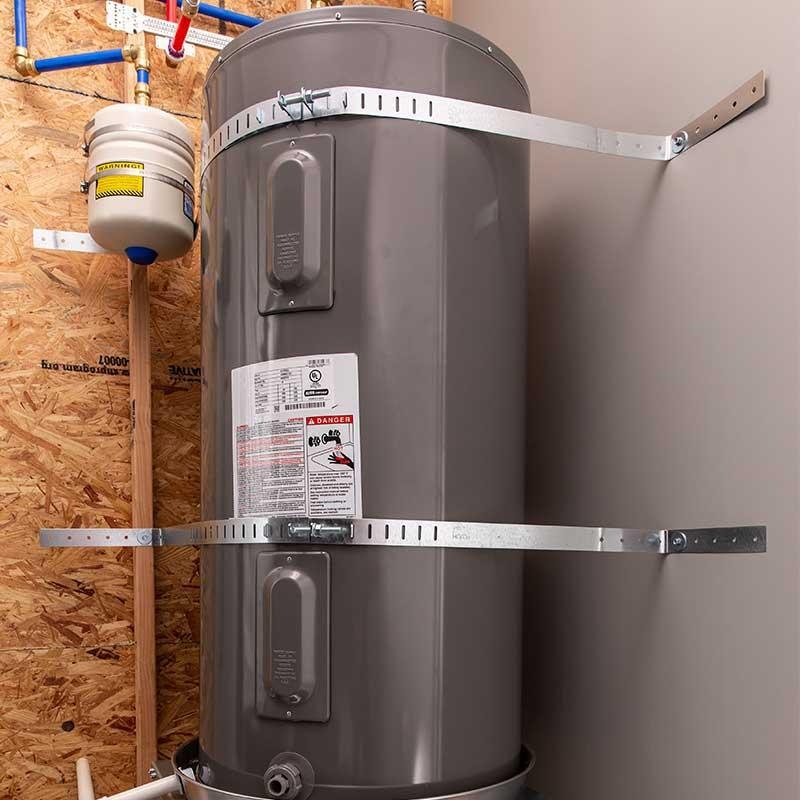
Installing a water heater requires adherence to specific code requirements designed to ensure safety, efficiency, and proper functionality. These codes vary somewhat by jurisdiction but are typically based on national standards like the International Residential Code and Uniform Plumbing Code. Proper installation is critical as improper setups can lead to gas leaks, carbon monoxide poisoning, electrical hazards, or water damage. Understanding these requirements helps homeowners and contractors ensure installations meet legal standards and pass inspection. This guide covers the essential code requirements for water heater installations across different types of water heaters.
| Requirement Type | Key Specifications |
|---|---|
| Permits | Required in most jurisdictions for new installations and replacements |
| Location | Specific clearances from combustibles; elevation requirements in garages |
| Venting | Proper materials, sizing, and termination points required |
| Pressure Relief | Temperature and pressure relief valve with proper discharge pipe |
| Seismic Protection | Strapping requirements in earthquake-prone regions |
Water heater installations in the United States are governed by several overlapping codes and standards. The International Residential Code (IRC) provides comprehensive guidelines for residential installations, covering placement, venting, and safety devices. Similarly, the Uniform Plumbing Code (UPC) and International Plumbing Code (IPC) detail specific requirements for water supply, drainage, and venting systems associated with water heaters.
For electrical connections, the National Electrical Code (NEC) specifies requirements for wiring, grounding, and circuit protection. Gas-fired water heaters must comply with the National Fuel Gas Code (NFGC), which addresses gas piping, combustion air, and venting requirements. These national codes serve as the foundation, but local jurisdictions may adopt modified versions or add supplementary requirements.
Most municipalities formally adopt one or more of these codes into local law, sometimes with amendments to address regional concerns like earthquake risks or extreme weather conditions. Always check with your local building department for the specific codes adopted in your area before beginning installation.
Permitting Requirements
Nearly all jurisdictions require permits for water heater installations, whether it’s a new installation or replacement. The permit process allows local authorities to verify compliance with safety codes and ensure proper installation. Typically, permits must be obtained before work begins, and working without required permits can result in fines, complications when selling your home, or insurance claim denials if problems occur.
The permitting process generally involves submitting an application that details the type of water heater, its specifications, and the proposed installation location. Costs vary widely by location, typically ranging from $50 to $200 for residential installations. Many jurisdictions offer online permit applications to streamline the process.
Most permit processes require at least one inspection after installation. The inspector will verify that the installation meets all code requirements before approving the work. Some complex installations may require multiple inspections at different stages. Having the installer present during inspection can help address any questions or concerns immediately.
Location and Clearance Requirements

Water heaters must be installed in locations that allow safe operation and adequate access for maintenance. Codes typically prohibit installations in bedrooms, bathrooms, or closets opening to these spaces unless specific ventilation and safety requirements are met. Water heaters generally need a minimum clearance of 12 inches for maintenance access, though specific clearance requirements vary by manufacturer.
Gas water heaters installed in garages must be elevated at least 18 inches above the floor to prevent ignition of gasoline vapors, which are heavier than air. All water heaters in garages should be protected from vehicle impact by barriers, bollards, or elevated platforms if located in areas where vehicles could potentially strike them.
Most codes require water heaters to be installed with a drain pan underneath if they’re located where leakage could cause property damage. The pan must be at least 1.5 inches deep with a minimum ¾-inch drain line that terminates at an approved location, typically outside the building or into a properly designed drainage system.
Don’t Overpay for HVAC Services – Call 888-894-0154 Now to Compare Local Quotes!
Combustion Air Requirements
Gas water heaters require adequate combustion air to operate safely. If installed in confined spaces, codes mandate two permanent openings to adjacent rooms or outdoors: one within 12 inches of the ceiling and another within 12 inches of the floor. These openings must have a minimum free area of 1 square inch per 4,000 BTU of the appliance’s input rating when communicating with larger indoor spaces.
Direct-vent water heaters that draw combustion air from outdoors through sealed intake pipes have less stringent room placement requirements since they don’t rely on indoor air for combustion. High-efficiency, power-vented units also have specific manufacturer-provided specifications that must be followed for proper air supply.
Venting Requirements

Proper venting is critical for gas water heaters to safely remove combustion gases, including potentially deadly carbon monoxide. Venting requirements vary significantly depending on the type of water heater. Conventional natural draft gas water heaters typically require Type B metal vents that must rise vertically with minimal horizontal runs to ensure proper draft.
Vents must maintain specific clearances from combustible materials, typically 1 inch for Type B vents. They must extend through the roof with proper termination height above the roofline—usually at least 1 foot above the roof and at least 4 feet from any wall or parapet. Horizontal venting through walls must follow strict code guidelines regarding distances from windows, doors, corners, and air intakes.
Power-vented and condensing water heaters often use PVC, CPVC, or polypropylene venting materials as specified by the manufacturer. These systems may be vented horizontally through side walls but must terminate away from openings into the building. Condensing units require proper drainage for the acidic condensate they produce, typically through neutralizing kits before entering the plumbing system.
Direct-vent systems that combine exhaust and intake in one assembly must be installed according to manufacturer specifications and maintain required clearances from building openings. All venting systems must be properly supported at intervals specified in the code, typically every 4 to 5 feet for horizontal runs.
Gas Line Requirements
Gas water heaters require properly sized gas lines to deliver sufficient fuel for operation. The gas line must be sized according to the BTU rating of the water heater and the distance from the gas meter. Most residential water heaters require at least a ½-inch gas line, but larger units or longer runs may necessitate ¾-inch or larger pipes.
Codes mandate a dedicated shutoff valve for the water heater, located in the same room and within 6 feet of the appliance. This valve must be easily accessible for emergency shutoff. Additionally, a sediment trap or drip leg must be installed immediately before the water heater’s gas regulator to collect pipe debris and condensation that could damage the appliance.
Only approved materials may be used for gas piping, typically black iron pipe, corrugated stainless steel tubing (CSST), or copper (where allowed by local code). Flexible gas connectors are permitted for final connections but must be properly sized, listed for the application, and not concealed within walls or floors.
After installation, gas lines must undergo pressure testing to check for leaks. This typically involves pressurizing the system with air to a specified test pressure (usually 10-15 psi) and verifying that the pressure holds for a required period, often 15-30 minutes. The test must be witnessed and approved by the code official during inspection.
Electrical Requirements
Electric water heaters must be connected to dedicated circuits with appropriate capacity for the heater’s voltage and amperage requirements. Typically, residential electric water heaters require a 240-volt, 30-amp circuit with 10-gauge wire, though larger units may need 40-amp circuits with 8-gauge wire. These specifications should be confirmed based on the manufacturer’s instructions.
An easily accessible disconnect switch is required within sight of the water heater. This can be a circuit breaker if the panel is in the same room as the heater or a separate disconnect switch installed near the appliance. The disconnect must be clearly labeled for emergency use.
Even gas water heaters typically have electrical components requiring proper connections. These units usually need a 120-volt, 15-amp circuit. All electrical connections must be made with appropriate wire nuts, junction boxes, and conduit as required by code. The water heater must be properly grounded according to NEC requirements.
In areas where water heaters are at risk of water contact (basements, utility rooms with nearby water sources), GFCI protection may be required for the electrical circuit. The heater’s junction box must be properly sealed, and all connections must be accessible for future maintenance without the removal of building components.
Water Supply and Pressure Relief Requirements
Water heater installations require shutoff valves on both cold water inlet and hot water outlet pipes to allow for maintenance without draining the entire plumbing system. These valves must be full-port design and compatible with the pipe material. Gate valves or ball valves are typically used for this purpose.
An expansion tank is required in closed plumbing systems (those with pressure-reducing valves, backflow preventers, or check valves). The expansion tank prevents excessive pressure buildup as water expands during heating. It must be properly sized according to the water heater’s capacity and installed on the cold water supply line.
Perhaps the most critical safety device, a temperature and pressure relief valve (T&P valve) must be installed on all water heaters. This valve automatically releases water if temperature or pressure exceeds safe limits. The T&P valve must have a relief rating that equals or exceeds the heating input rate and must not be altered or modified.
The T&P valve requires a properly installed discharge pipe that is the same diameter as the valve outlet (typically ¾ inch), made of rigid approved material (usually copper or CPVC), terminating 6-12 inches above the floor or to an approved location outside. This pipe must not be threaded at the termination, must maintain a downward slope for drainage, and cannot have valves or restrictions.
Seismic Protection Requirements

In areas prone to earthquakes, water heaters must have seismic restraints to prevent tipping, which could cause gas leaks, electrical hazards, or water damage during seismic events. Most seismically active regions require two straps: one in the upper third of the tank and one in the lower third, with the lower strap at least 4 inches above the controls.
These restraints must be securely fastened to wall studs or other structural elements, not just to drywall or plaster. Proper strapping kits designed specifically for water heater restraint are widely available and must be installed according to manufacturer instructions. The straps must wrap completely around the tank without relying solely on the water or gas connections for support.
Don’t Overpay for HVAC Services – Call 888-894-0154 Now to Compare Local Quotes!
In addition to strapping, flexible connectors must be installed on water and gas lines in seismic zones. These connectors allow for movement during an earthquake without breaking rigid pipes. For gas lines, these must be approved gas appliance connectors of adequate length. For water lines, copper, stainless steel, or other approved flexible connectors must be used.
Special Requirements for Tankless Water Heaters
Tankless water heaters have specific code requirements that differ from traditional tank-style units. Their gas supply lines often need to be larger than those for conventional water heaters due to higher BTU requirements. Typically, a ¾-inch or larger gas line is needed, and existing ½-inch lines may need to be upgraded during replacement installations.
Venting for gas tankless units typically requires stainless steel Category III venting for non-condensing models or PVC/CPVC for condensing models. These venting materials may differ from traditional water heater vents and must precisely follow manufacturer specifications. Condensing units also require proper condensate disposal systems, often with neutralizers to address the acidic condensate.
Electric tankless water heaters generally require substantial electrical service—often multiple 40-60 amp 240-volt circuits depending on the model and capacity. This frequently necessitates electrical panel upgrades during conversion from tank-style to tankless systems. Multiple circuits must be properly labeled and may require coordinated disconnect mechanisms.
Most tankless units have strict clearance requirements for maintenance access that must be followed. They also need to be mounted securely to structural elements capable of supporting their weight. Outdoor models must be specifically rated for external installation and installed according to manufacturer requirements for freeze protection.
Code Requirements for Replacement vs. New Installations
When replacing an existing water heater, some jurisdictions allow certain aspects of the installation to remain as they were if they met code when originally installed—a concept known as “grandfathering.” However, safety-critical elements like venting, pressure relief, and gas connections typically must be brought up to current code regardless of when the original installation occurred.
New installations must fully comply with current codes without exception. This includes all placement, clearance, venting, electrical, and plumbing requirements. Converting from one type of water heater to another (such as electric to gas or tank to tankless) is considered a new installation and requires complete compliance with current codes.
Many jurisdictions have adopted energy efficiency requirements that affect water heater installations. These may include insulation requirements for pipes, minimum efficiency ratings for the units themselves, or requirements for heat traps on inlet and outlet pipes. These requirements typically apply to both new installations and replacements.
When upgrading to higher-capacity units or changing fuel types, additional code requirements may be triggered for the building’s overall systems. For example, upgrading to a larger gas water heater might require evaluation of the home’s gas service capacity or chimney sizing. Similarly, upgrading to a larger electric unit might necessitate electrical service improvements.
Common Code Violations and How to Avoid Them
One of the most frequent code violations is improper venting. This includes using the wrong type of vent material, inadequate clearance to combustibles, improper slope, or incorrect termination height above the roof. Always follow manufacturer specifications for venting materials and installation details while adhering to local code requirements for clearances.
Inadequate combustion air supply is another common violation for gas water heaters. Ensure proper air openings to the space where the heater is installed, particularly if it’s in a confined area or closet. For direct-vent models, verify that intake and exhaust terminations maintain required clearances from windows, doors, and air intakes.
Many installations fail inspection due to missing or improperly installed T&P relief valve discharge pipes. Ensure the discharge pipe is the correct diameter, material, and length, with proper termination. Never cap, plug, or install a valve in this pipe, and ensure it maintains a downward slope for drainage.
In seismic zones, missing or inadequate strapping is frequently cited. Use approved seismic strapping kits, ensure they’re attached to structural elements (not just drywall), and verify proper placement on the water heater. Both straps should be tightly secured around the water heater body, not the pipes or controls.
Electrical violations often involve incorrect wire sizing or improper connections. Use the correct gauge wire for the water heater’s amperage requirements, ensure proper connections in junction boxes, and provide the required disconnect means within sight of the unit. When in doubt, consult with a licensed electrician to verify compliance.
Professional Installation vs. DIY Considerations
While some homeowners with plumbing and electrical experience may consider DIY installation, water heater installation involves multiple safety-critical systems including gas, electrical, and venting components. Improper installation can lead to carbon monoxide poisoning, fire hazards, explosion risks, or water damage. Professional installers understand the intricacies of code requirements and safety considerations.
Don’t Overpay for HVAC Services – Call 888-894-0154 Now to Compare Local Quotes!
Most jurisdictions allow homeowners to perform water heater installations on their own homes with proper permits, but the work must still meet all code requirements and pass inspection. DIYers should thoroughly research local codes, obtain necessary permits, schedule required inspections, and be prepared to make corrections if code violations are identified.
Professional installers typically offer warranties on their work in addition to the manufacturer’s warranty on the equipment. This provides additional protection if problems arise from the installation. Many manufacturers may void equipment warranties if units are not installed by qualified professionals according to their specifications.
For complex installations involving fuel conversions, tankless systems, or significant modifications to existing systems, professional installation is strongly recommended. Licensed plumbers and contractors have the specialized tools, knowledge, and experience to ensure safe, code-compliant installations while avoiding potential hazards and costly rework.
How to Get the Best Water Heater Installation Prices?
- Firstly, keep in mind that installation quality is always the most important thing for water heater project. So never sacrifice contractor quality for lower price.
- Secondly, ask for at least 3 bids before you make the decision. You can click here to get 3 free estimates from your local water heater contractors, and this estimate already takes rebates and tax credit into consideration and filters unqualified contractors automatically.
How to Get the Best HVAC Prices
- Firstly, keep in mind that installation quality is always the most important thing for residential HVAC project. So never sacrifice contractor quality for a lower price.
- Secondly, remember to look up the latest rebates as we talked above.
- Thirdly, ask for at least 3 bids before you make the decision. You can click here to get 3 free estimates from your local contractors, and this estimate already takes rebates and tax credit into consideration and filter unqualified contractors automatically.
Lastly, once you chose the right contractor, remember to use the tactics from this guide: Homeowners Tactics When Negotiating with HVAC Dealer to get the final best price.



